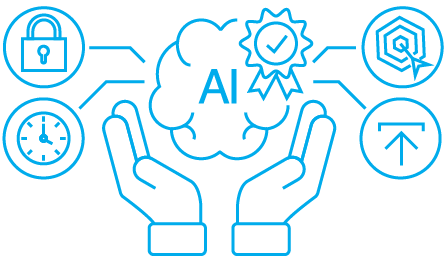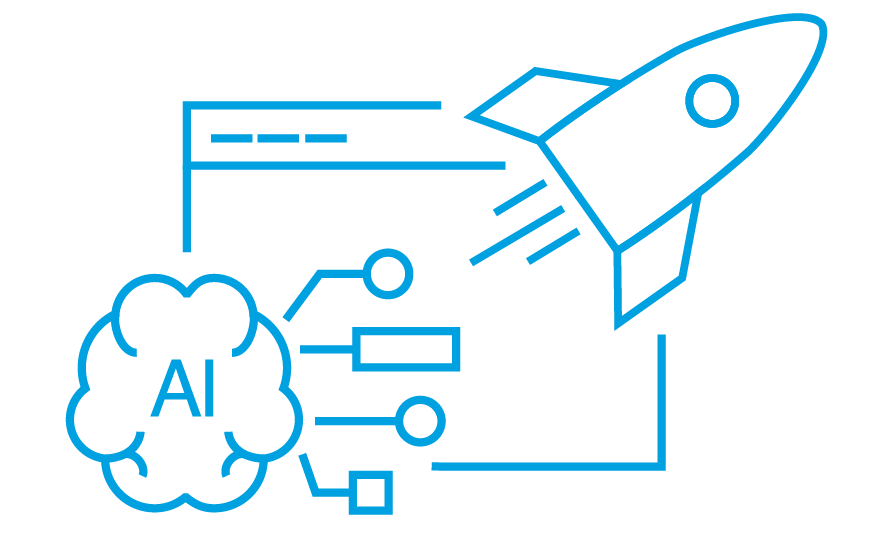- What is Alternative Data?
- What are the types of alternative data?
- Who Uses Alternative Data?
- How Do You Find Alternative Data?
- How Alternative Data drives business decisions?
- What is the future of alternative data?
- Wrapping up
Key Points:
- Traditional data sources like financial statements and market reports are no longer the sole means of gaining insights in the data-driven world.
- Alternative data refers to non-traditional data sources that provide unique insights into various aspects of business operations.
- Alternative data can revolutionize decision-making processes by providing valuable and extensive market insights.
- Examples of alternative data include digital traffic data, activity feed, keywords feed, clickstream, geo-location data, ESG data, and credit card transactions.
- Alternative data is particularly valuable for business areas such as Finance, Research, consulting companies, social listening firms and AI and analytical platforms.
- Companies that work with alternative data have data science teams responsible for organizing, analyzing, and leveraging the data.
- Alternative data helps companies understand consumer preferences, sentiment, and behavior, enabling them to make informed decisions and mitigate risks.
- Leveraging non-traditional data sources allows companies to unlock valuable intelligence and stay ahead in the data-driven world.
In today’s data-driven world, businesses are constantly seeking innovative ways to gain a competitive edge and make smart-driven decisions. Traditional data sources, such as financial statements and market reports, have long been relied upon. However, with the rise of technology and the availability of vast amounts of data, alternative data has emerged as a powerful tool for businesses to gain valuable insights.
Alternative data refers to non-traditional data sources that can provide unique and unconventional insights into various aspects of business operations. In this article, we will explore what the alternative data is and how it can revolutionize decision-making processes.
What is Alternative Data?
Alternative data refers to non-traditional sources of information that provide insights into various aspects of business, finance, and consumer behavior. This data is often collected by data companies who have access to a large number of data sources in order to provide businesses with valuable and extensive market insights. With the increasing availability of alternative data, businesses can leverage these unique sources to gain a competitive edge over their competitors and other entities in the marketplace.
What are the types of alternative data?
The most common types of alternative data include:
- Digital Traffic Data: This refers to data that tracks the flow of online traffic, such as website visits, page views, and click-through rates.
- Web Traffic – focuses on the number of visitors to a website, their behavior, and the sources that drive them to the site.
- Activity Feed – encompasses a wide range of user actions, such as online purchases, app usage, and social media interactions, which can be analyzed to understand consumer preferences and trends.
- Keywords Feed – refers to data that tracks the popularity and frequency of specific keywords or search terms used by internet users.
- Clickstream -informs about the sequence of web pages that a user visits and the actions they take, providing insights into user behavior and preferences.
- Geo-location Data – provides information about the physical location of users, allowing businesses to understand customer movement patterns and target specific geographic areas.
- ESG data (environmental, social, and governance data) – refers to information about companies’ sustainability practices, social impact, and corporate governance, often used by investors to assess the sustainability and ethical performance of companies before making investment decisions
- Credit card transactions – refers to the information generated when a credit card is used for purchasing goods or services. It includes details such as the date of the transaction, the amount spent, the merchant or business where the transaction took place, and sometimes additional information like the location or category of purchase.
Who Uses Alternative Data?
Alternative data is particularly valuable in industries such as finance, marketing, and risk management. Most companies that work with alternative data have their own data science teams who are responsible for organizing, analyzing, and leveraging alternative data to gain valuable insights and make informed decisions.
Alternative data can be used by:
- Brokerage firms
- Research companies & agencies
- investors
- AI & analytics platforms
- Consulting companies
- Social listening firms

Alternative data helps various companies understand consumer preferences, sentiment, and behavior allowing them to make decisions based on real-time data and mitigate potential risks and grab arising opportunities.
Overall, this type of data has become an essential tool for businesses seeking to gain deeper insights into their markets and customers. By leveraging non-traditional sources of information, companies can unlock valuable intelligence and stay ahead in today’s data-driven world.
How Do You Find Alternative Data?
Companies such as retail investors, data analytics companies, brokerage firms, social listening firms, research agencies, AI firms looking for alternative data should reach out to data providers who offer this type of data and run a test analysis taking into account all of the following criteria:
- Data Quality: Assess the quality and accuracy of the data provided by the vendor. Ensure that the data is reliable, up-to-date, and relevant to your specific needs.
- Data Compliance: Verify that the data provider adheres to relevant data protection and privacy regulations, such as GDPR or CCPA. Ensure that the data is obtained and processed ethically and legally.
- Data Sources: Understand the sources from which the data provider collects information. Evaluate the reliability and diversity of these sources to ensure comprehensive coverage.
- Data Scalability: Consider the scalability of the data provider’s offerings andnsure that they can handle your current and future data requirements as your business grows.
- Data Security: Evaluate the data provider’s security measures to protect the integrity and confidentiality of the data.
How Alternative Data drives business decisions?
The purpose of alternative data is to complement traditional data sources and provide a more comprehensive view of the market landscape.
By analyzing alternative data, businesses can uncover hidden patterns, trends, and correlations that may not be evident through traditional data analysis alone.

Alternative data can be used in the following areas:
Data analytics – to uncover patterns, draw conclusions, and make informed decisions. It involves using tools and techniques to transform data into meaningful insights.
Usage of alternative data in the field of data analytics:
- provides a broader and more comprehensive view of consumer behavior and market trends.
- enhances predictive models, identify emerging trends, and make data-driven decisions.
- uncovers valuable insights that are not available through traditional data sources.
- predicts price movements on the cryptocurrency market and identifies trading opportunities and risks.
- delivers beneficial information about stock exchange and listed companies which allows to predict their performance.
Social listening – to provide information about user interests and brand mentions gathered from various sources such as social media platforms, forums, and blogs.
Usage of alternative data in the field of social listening:
- identifies brand perception and monitors customer feedback.
- provides real-time data for immediate analysis and response.
- helps businesses make data-driven decisions to improve products, services, and marketing strategies.
- identifies influencers and key opinion leaders in specific industries or target markets.
- can be used to identify potential crises or reputation management issues.
- allows businesses to stay updated on conversations and discussions happening in their industry or among their target audience.
Market trends – assists businesses in comprehending consumer demands and behavior, along with technological trends. Alternative data empowers businesses to recognize emerging consumer preferences, evaluate brand sentiment, and remain informed about the most recent advancements in technology.
Usage of alternative data in the field of market trends:
- enhances predictive models and helps with data-driven decisions.
- identifies emerging trends and patterns in the market.
- provides insights into customer sentiment and preferences.
- offers a competitive edge by leveraging unique data sources.
- evaluates the impact of marketing campaigns and strategies.
- monitors real-time market changes and adapt accordingly.
What is the future of alternative data?
The alternative data market has experienced significant growth in recent years. It is projected to grow from $3.23 billion in 2022 to $4.74 billion in 2023, with a compound annual growth rate (CAGR) of 46.7%.

Source: link
Furthermore, the market size is expected to reach $18.94 billion in 2027, with a CAGR of 41.4%.
These statistics indicate a substantial expansion of the alternative data market, driven by the rising demand for alternative data from hedge funds and the emergence of new technologies that facilitate data collection and analysis.
The future of alternative data looks promising. The market is expected to continue its growth trajectory, driven by increasing demand from various industries, including finance, marketing, and risk management. The launch of next-generation platforms that leverage artificial intelligence (AI) and alternative data is a key trend in the market.
These platforms provide timely insights and analysis, enabling businesses to make informed decisions based on comprehensive data.
Overall, alternative data is playing an increasingly crucial role in investment decision-making, market analysis, and financial inclusion. As technology continues to advance and data sources become more diverse, the importance and utilization of alternative data are expected to grow further in the future.
Wrapping up
Alternative data offers businesses a wealth of opportunities to gain a competitive advantage and make informed decisions. By leveraging non-traditional data sources, companies can uncover hidden insights, identify emerging trends, and optimize their operations.
While challenges exist in finding and analyzing alternative data partner, the potential benefits far outweigh the obstacles. As businesses continue to embrace alternative data, they will be better positioned to thrive in an increasingly data-driven world.


